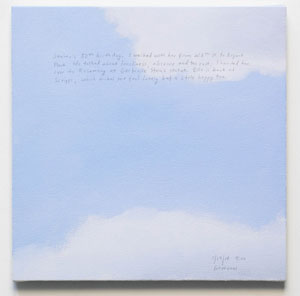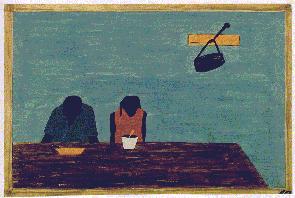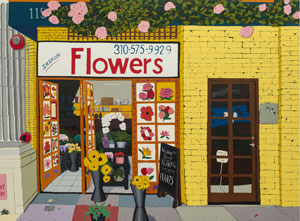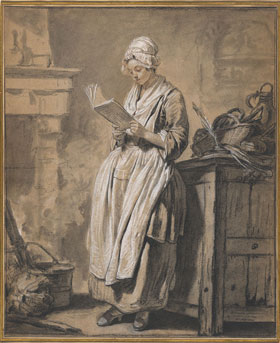10.16.24 — Stop at Nothing
When a work takes over the gallery, is it site specific, or was the gallery an obstacle on the way to making art? For Leonardo Drew, the choices are inseparable.
He makes work so massive and diffuse that it stops at nothing—if only as a figure of speech. In real life, Drew stops for everything, only to keep piling it on. The result is untitled, for who would dare pin it down, at Galerie Lelong through October 19? The walls themselves are a breath of light. 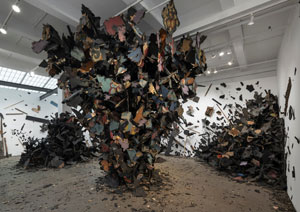
Drew has been piling it on for a long time now. I first encountered him in what become one of this Web site’s first gallery tours, in early 1997, and again in 2001. I started the site with extended reviews of art’s deep history in museums, where my heart still lies. I had gone to galleries, though, and was just then seeing the departure from Soho in action. One dealer on the move, Mary Boone, had shaken things up on West Broadway with a scorn for late Modernism and a studied elegance, with such artists as Julian Schnabel, Eric Fischl, and David Salle. Drew, though, had little time for either elegance or scorn. He was trashing the place much as late modern art had done before.
Richard Serra had flung molten lead, at his own risk. Barry Le Va had broken glass, and Chris Burden had crawled across the wreckage. Artists have been sorting through the damage ever since. For Ilit Azoulay at the Jewish Museum, every loss is the bearer of memory in the Middle East. And one can look at Drew’s scraps a long time in search of something familiar, from his studio or his history. He is, after all, African American. He, though, has his eye elsewhere.
Another side of late Modernism nurtured the optical and physical qualities of nonstandard materials. Back when, Drew incorporated rust for its powdery texture and iron oxide glow. Now he combines wood scraps, glass and paint. They produce dark colors against the gallery’s freshly painted white. He also arranges them in square panels, hung on the walls much like squares for Ad Reinhardt. He asks to restore Reinhardt’s translucency, color, and approach to black while playing to the house.
Still, these are remnants, and he lets you know it. Back in the day, I saw a little too much theater. I saw a little too much theater. I compared the air of decay to the end of Planet of the Apes, the Statue of Liberty among the ruins, while less sure about what to curse. Drew can, though, be genuinely site specific, accepting what came before. When he turned to public sculpture in Madison Square Park at the start of the pandemic, he let the grass shine through. It was high time I revisited my own cynicism.
It is hard to dismiss outright work that covers the walls, nestles into a corner, and surrounds supporting columns. Scraps on the wall seem to rise as if from a single act of force, and the corner pile gives that force direction. Scraps on one column gather at top like a mushroom, while scraps on the other fall around the base. They look back to the artist’s studio while running free. They are anything but Reinhardt’s, but they still play with materials, darkness, color, and light. Theater or not, it is the show’s heart of glass.
Read more, now in a feature-length article on this site.
